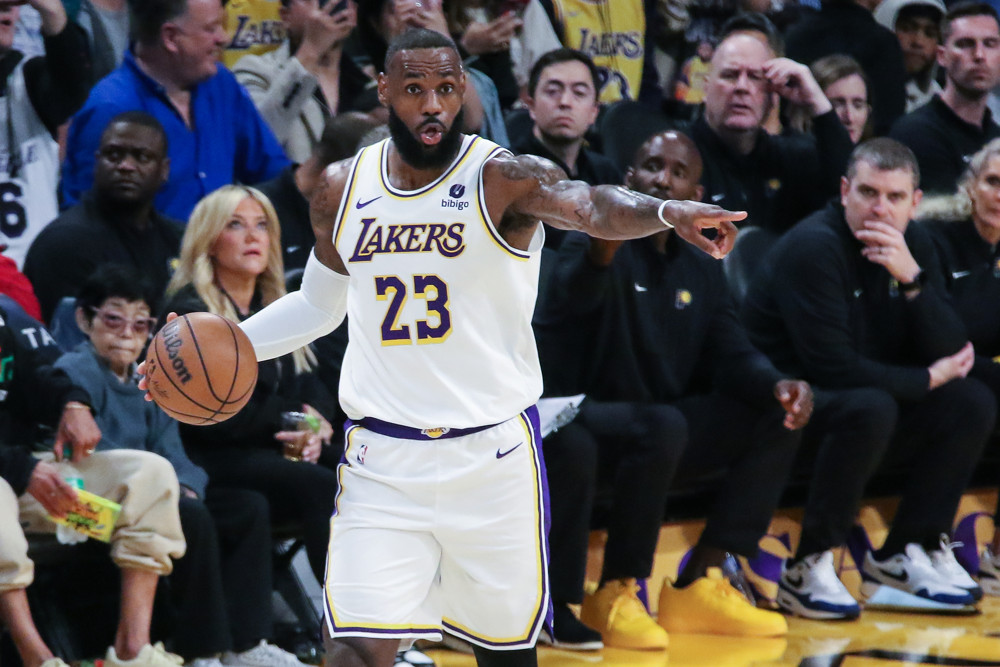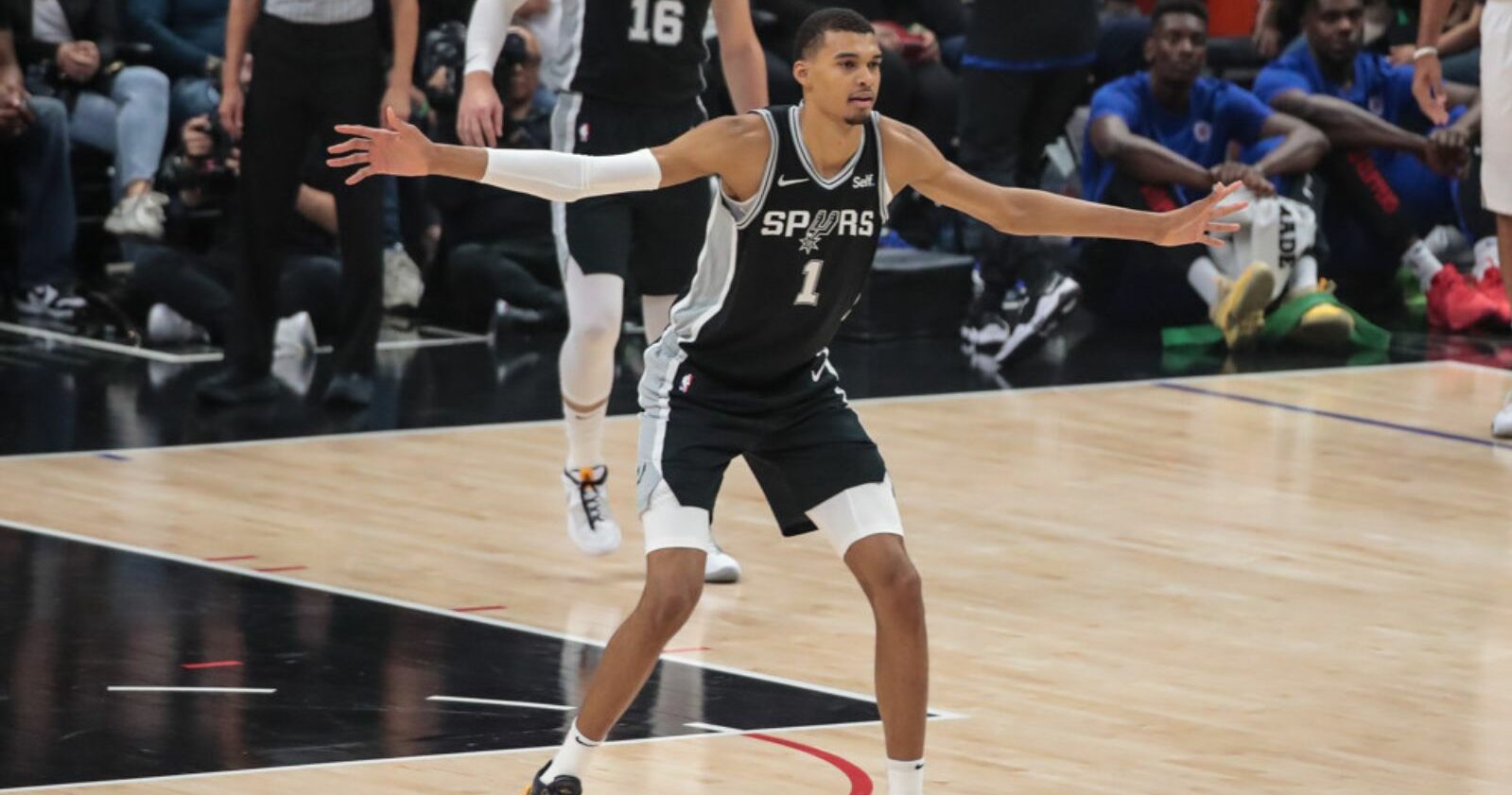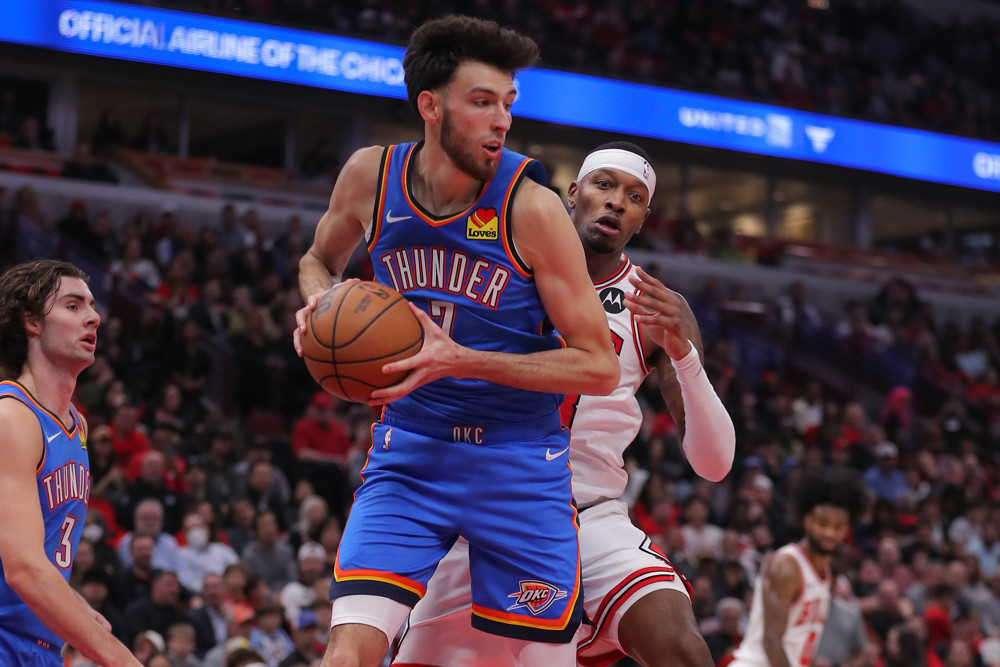Photo: Melissa Tamez/Icon Sportswire
The Knicks are no strangers to tumultuous seasons, but this year has been chaotic for different reasons than Knicks squads of old.
The 2023-24 Knicks have contended with uneven play, major trades, and the most injuries this side of Memphis, which is why when analyzing their performance and outlook, it’s best to divide their season into three segments:
- Pre-OG Anunoby Trade (17-15)
- Post-Anunoby Trade, Pre-Julius Randle Injury (12-2)
- Post-Randle Injury (18-15, 5-1 with Anunoby and 13-14 without)
Mitchell Robinson, OG Anunoby, and Julius Randle have missed a combined 111 games in their time with the Knicks this season, but through it all, they have embodied the “Next Man Up” philosophy, using their combination of physical defense and just enough offensive creation to grind out wins with a depleted roster.
And yet, what is good enough for the regular season is not necessarily indicative of what is good enough for the playoffs, when the games slow down and every weakness is amplified, dissected and exploited. The news that Randle will miss the rest of the season and playoffs after undergoing shoulder surgery came as a blow to the Knicks’ hopes of challenging the Celtics (whom they play tonight) for control of the Eastern Conference, but how does it actually re-shape their team identity?
Change in their offensive attack: Only Brunson Gets To The Line
It’s no surprise that losing a two-time All-NBA forward with versatile scoring ability has forced a change in the Knicks’ offensive attack. With Randle, the Knicks hovered around the top 10 in free throw rate for most of the season, ranking 11th league-wide pre-Anunoby trade and 8th following the trade.
With Randle out, foul-magnets RJ Barrett and Immanuel Quickley shipped off to Toronto, and Anunoby missing time as well, that number cratered, dropping the team to 23rd.
Brunson often functions as the lone player able to consistently get to the line, and this is a large contributor to the Knicks’ offensive rating falling out of the top-10, where it has hovered all season, to 14th in this last chunk of the season.
That’s far from the only change in approach, however.
Other changes
In the 14 games that followed the Anunoby trade but preceded Randle and OG’s injuries, the Knicks looked like a dominant team, employing a brutal combination of size and skill on both ends of the floor.
Along with the free throw rate numbers, they had 3 other rankings of note.
| Stat | Rank |
| Transition Opportunities Per Game | 4th |
| Offensive Rebound Rank | 1st |
| Passes Per Game | 4th |
Their ball-screen offense was good but not great both in terms of volume and efficiency, but where they really dominated was playing out of isolation.
With two good isolation operators in Brunson and Randle and a myriad of shooters and ball-movers around them, the Knicks were able to exploit aggressive coverages to consistently find quality looks.
If Jalen Brunson gets two on the ball look at what opens up for the Knicks offense. pic.twitter.com/LKXnakONBe
— Steve Jones Jr. (@stevejones20) January 4, 2024
During this part of the season, the Knicks ranked 9th in isolation opps while scoring over 1.1 points per chance (PPC*), the fourth-best mark in the league, on the 8th-highest True Shooting percentage. They also averaged nearly two assists per game out of isolation, the second-highest number for that stretch of time.
*Points scored per offensive opportunity that leads to a result in the same sequence
While the injury-ravaged team fighting valiantly to maintain top-3 seeding in the Eastern Conference has maintained a similar volume of isolation attempts, the efficiency and efficacy of such attempts have cratered without Randle.
| Before Randle Injury | Since | |
| True Shooting Pct | 57% | 48% |
| Points Per Chance Rank | 4th | 20th |
Without a second reliable self-creator, defenses have been able to overload on Brunson isolations and trust their ability to recover to shooters.
The team has also slowed down considerably, averaging nearly 3 fewer transition opportunities per game during this post-Randle stretch of season.
Instead, they’ve opted to trade those transition opps for halfcourt ball-screen chances. Since late January, the Knicks’ have jumped from 11th to 5th in terms of ball-screen opps per game, and are getting nearly 4 more shots per game out of them.
Putting Brunson In Position To Succeed
Their efficiency in the pick and roll is on the wrong side of average (nearly three percent lower than with Randle and Anunoby), but where they have found value is in the way that Brunson forces defenses to overcommit.
While the Knicks are in the bottom-10 in assists out of ball screens during this late-season push, they’re 3rd in hockey assists, and when watching Brunson operate, it’s clear why.
Isaiah Hartenstein really gives the Knicks a lift on both ends. His work on the short roll helps boost their attack especially with teams throwing more at Brunson. On the re-screen Brunson attacks, Hartenstein gets it on the pocket pass and it's right to OG for a corner 3. pic.twitter.com/Bg3CuXOD2P
— Steve Jones Jr. (@stevejones20) April 10, 2024
The key stat here is that the Knicks rank fourth in advantages created out of ball screen situations in the 2.5 months following Randle’s injury. While that isn’t leading directly to assists for Brunson, it is leading to assists for the players Brunson hits after bending the defense.
By ramping up the number of ball-screens and empowering players like Josh Hart and Isaiah Hartenstein to create out of short-roll situations, the Knicks have managed to keep their offense alive despite having so many key players in and out of the rotation.
Playoff Watch
The question is: how will that translate to playoff basketball?
The good news is that the slow, half-court based grind-out style of play that the team has employed since Randle went down is easily translatable to the postseason, where pace slows and every possession matters more.
There are also few players more steady with the ball in their hands than Brunson, who has spent the last three months learning to attack defenses that are overloading on him in order to force the ball out of his hands. If that doesn’t wear him down, it’ll be the perfect “iron sharpens iron” training.
There’s also the matter of Anunoby. It’s hard to ignore the fact that the Knicks are 17-3 this season when Anunoby plays. Some of that is due to scheduling – Anunoby’s trade coincided with the Knicks’ easiest stretch of the season, in which they faced 7 lottery teams in his first 12 games – but his arrival also helped to balance out the roster, whether Randle plays or not.
Anunoby’s high-level floor spacing (43% on about 3 corner 3s per game since coming to New York) and strong cutting has helped the offensive flow, while his ability to lock down the best perimeter player on opposing teams has shifted passing lane pests like Hart and Donte DiVencenzo into their ideal defensive roles.
With Anunoby, Hartenstein, Hart, Miles McBride, and a freshly-healthy Mitchell Robinson in the fold, the Knicks will have enough defense to hang with any team in the playoffs.
Given their abundance of shooters and the right matchup, that could well be enough to win a first-round playoff series and give a second-round team an admirable fight. But without Randle’s added offensive gravity and versatility, the Knicks will need a 2023 Miami Heat-style run from their shooters if they have any hope of progressing further than that.



